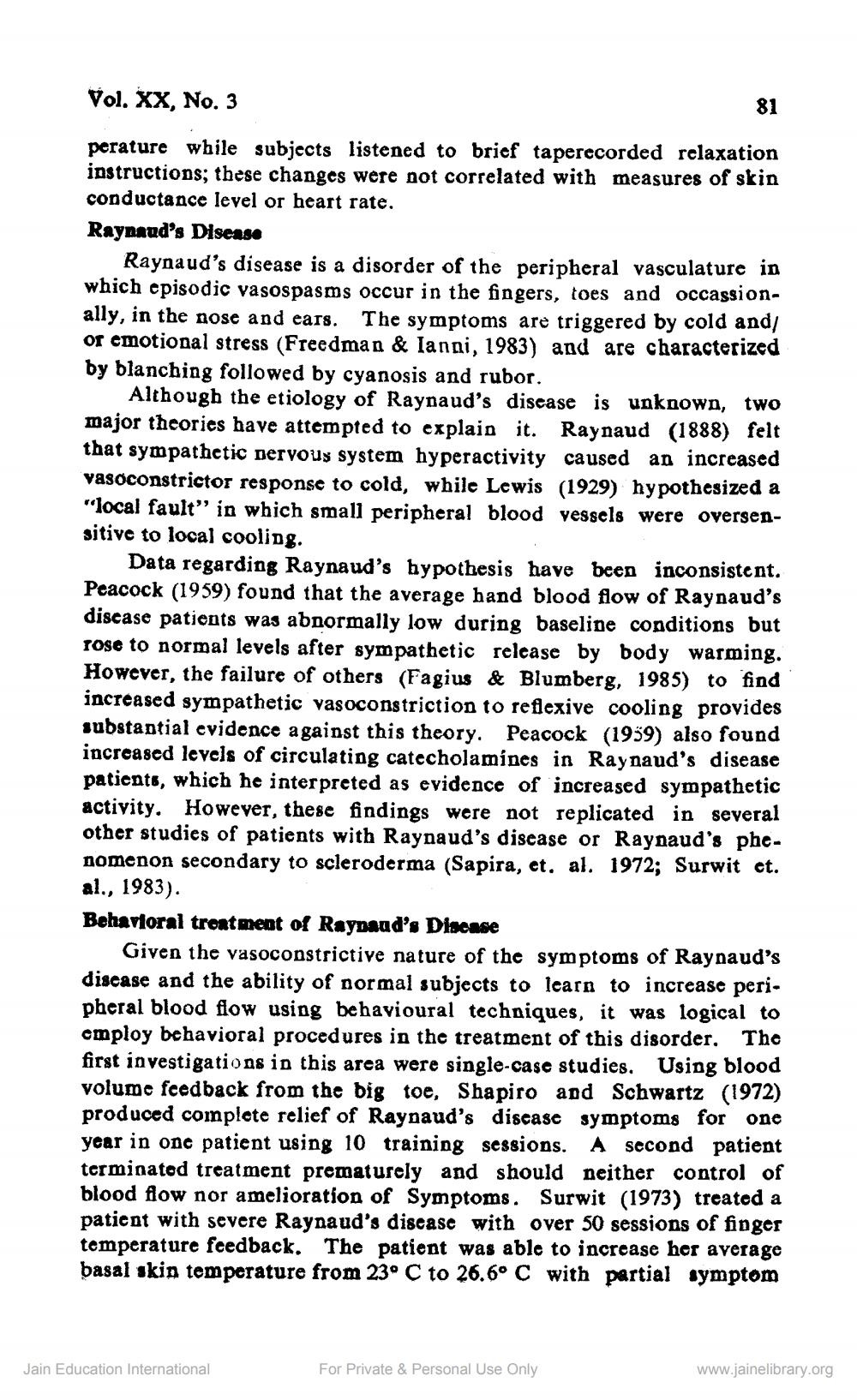________________
Vol. XX, No. 3
81 perature while subjects listened to brief taperecorded relaxation instructions; these changes were not correlated with measures of skin conductance level or heart rate. Raynaud's Disease
Raynaud's disease is a disorder of the peripheral vasculature in which episodic vasospasms occur in the fingers, toes and occassionally, in the nose and ears. The symptoms are triggered by cold and/ or emotional stress (Freedman & Ianni, 1983) and are characterized by blanching followed by cyanosis and rubor.
Although the etiology of Raynaud's disease is unknown, two major theories have attempted to explain it. Raynaud (1888) felt that sympathetic nervous system hyperactivity caused an increased vasoconstrictor response to cold, while Lewis (1929) hypothesized a "local fault” in which small perip sitive to local cooling.
Data regarding Raynaud's hypothesis have been inconsistent. Peacock (1959) found that the average hand blood flow of Raynaud's discase patients was abnormally low during baseline conditions but rose to normal levels after sympathetic release by body warming. However, the failure of others (Fagius & Blumberg, 1985) to find increased sympathetic vasoconstriction to reflexive cooling provides substantial evidence against this theory, Peacock (1959) also found increased levels of circulating catecholamines in Raynaud's disease patients, which he interpreted as evidence of increased sympathetic activity. However, these findings were not replicated in several other studies of patients with Raynaud's disease or Raynaud's phenomenon secondary to scleroderma (Sapira, et. al. 1972; Surwit et. al., 1983). Behavioral trontment of Raynaud's Disense
Given the vasoconstrictive nature of the symptoms of Raynaud's disease and the ability of normal subjects to learn to increase peri
od flow using behavioural techniques, it was logical to cmploy behavioral procedures in the treatment of this disorder. The first investigations in this area were single-case studies. Using blood volume feedback from the big toe, Shapiro apd Schwartz (1972) produced complete relief of Raynaud's disease symptoms for one year in one patient using 10 training sessions. A second patient terminated treatment prematurely and should neither control of blood flow nor amelioration of Symptoms. Surwit (1973) treated a patient with severe Raynaud's disease with over 50 sessions of finger temperature feedback. The patient was able to increase her average basal skin temperature from 23° C to 26.6° C with partial symptom
For Private & Personal Use Only
Jain Education International
www.jainelibrary.org




